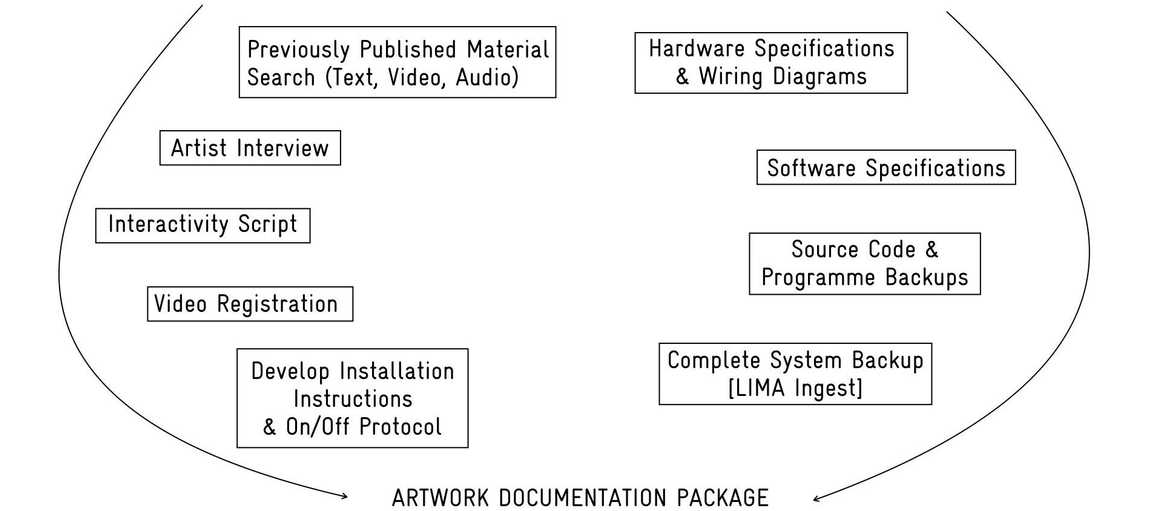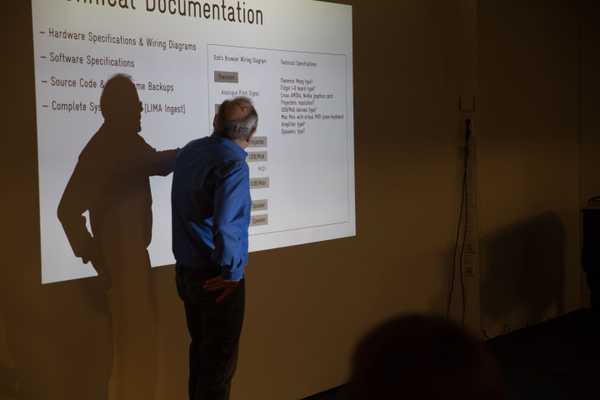
Artwork Documentation Tool
Document your work while creating your work.
Documenting and preserving media artworks is not easy, and can be complicated by competing requirements of time and resources. For these reasons, LI-MA created the Artwork Documentation Tool for artists to be more in control of future presentations of their artworks.
The tool is geared towards artists who create complex, software-based installations, which could also be interactive. However, this tool is also useful for artists who work with digital media in a performance or installation capacity. Just explore the tool and answer only the questions relevant to your case, as preferred. The tool is open to artists who are in the process of creating new works, or who would like to go back and document older works.
The Artwork Documentation Tool is free to use and offers a series of steps and tasks in gathering and documenting information about artworks and also acts as a place to store this. The information that is brought together will contribute greatly to the personal knowledge of an artist’s practice and could also help artists in offering their work for exhibition, acquisition and purchase to interested galleries, museums and collectors.
Thinking about how artists can be better empowered to preserve their own work is part of a legacy of people working through these issues and offering advice and tools to artists. The Variable Media Questionnaire and artist Rafael Lozano-Hemmer's 2015 manifesto provide invaluable insights, and significantly Influenced LI-MA's research and the Artwork Documentation Package we developed on the basis of multiple case studies from the FUTURE PROOF research project in collaboration with Geert Mul. The tool is developed as an artwork presentation and preservation script to document complex digital artworks by yourself.
How to use the tool
After creating an account and entering the online portal, artists can start different documentation “packages” for their different artworks. For each artwork, the artist fills out basic information about the work, and can then move through a series of eight steps, each with a different focus:
- Save Sketches & Working Notes
- Make Backups & Store Appropriately
- Document Software
- Document Hardware & Playback Equipment
- Create Wiring Diagrams & Document
- Installation Build-Up
- Document Key Information About the Artwork
- Make a Video Registration of the Artwork
- Gather & Store All Additional Available Material
These steps and their related information and tasks give artists a stronger grasp of the needs of their works over time, so that they can continue presenting them. The Artwork Documentation Tool is geared towards artists with artworks in progress, for artists going back and documenting older works, and for artists to document works that are being updated, which speaks to artists of many generations. The tool is suitable for all artists working in the realm of born-digital art, in particular those building complex, software-based installations. Any information that is fed into the ADT is not stored or preserved for the future. If you are interested in storing your artworks sustainably for the future, see our chapter on storage.
Who uses the ADT?
The tool has been successfully launched online and has been shared with >1000 artists, art academies and media art labs with much enthusiasm.
In addition, LI-MA has worked with a number of art academies including the KABK, ArtEZ, School of Art, Porto and the Rietveld Academie to explore and use the Artwork Documentation Tool.
LI-MA works with students from a range of academies to redesign the tool for functionality. The aim is to raise awareness with these artist students, who we would like to use the tool, and also offers a chance for LI-MA and the students to collaborate on the tool’s final design.










